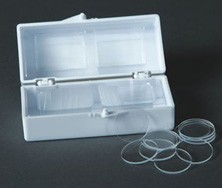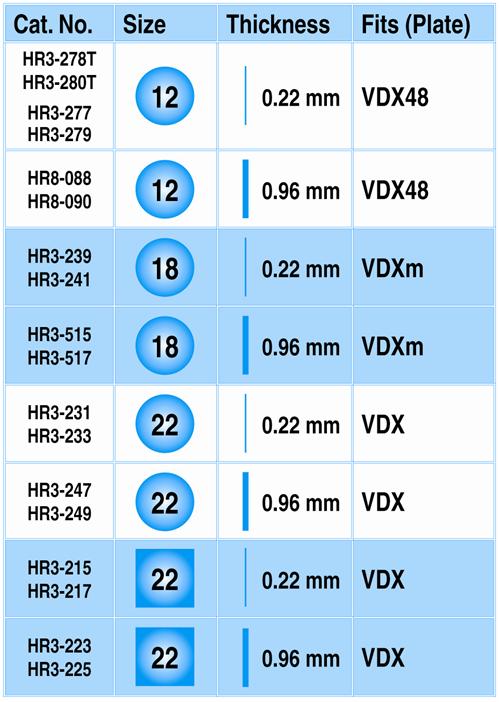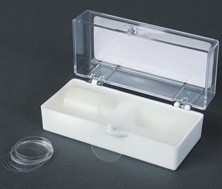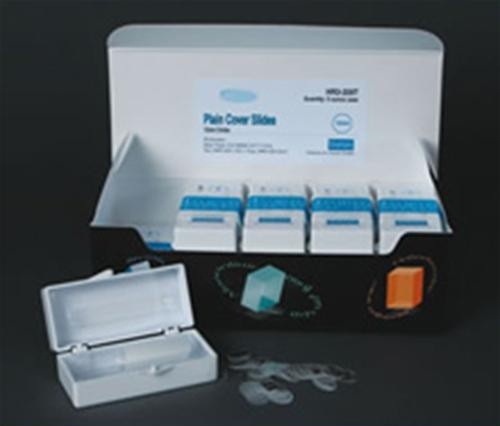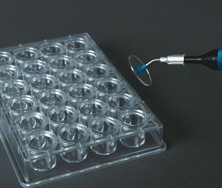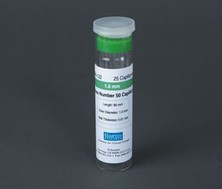Hampton 蛋白质结晶试剂和耗材介绍
美国Hampton Research公司位于加利福尼亚州,是一家专门从事蛋白质晶体研究的生产商。该公司向全球科研人员提供全面的晶体研究试剂和相关实验耗材,同时提供晶体设计和合成方面的定制服务。Hampton Research公司以其先进的生物大分子结晶技术和广泛实用的产品线,不仅为全世界晶体研究人员的工作带来了便捷,而且也受益于科研人员的回馈不断发展自己,目前已成为晶体研究领域最受信赖的品牌之一。
上海金畔生物作为Hampton research品牌蛋白结晶产品的代理商,我们将竭诚为您服务,欢迎新老客户咨询。
Hampton research主要产品:
| 产品分类 |
特点描述 |
| Crystallization Screens |
用于筛选和优化蛋白质/多肽/核酸结晶的一系列经验证的高精配方型溶液 |
| Optimize Reagents |
结晶级别盐类,聚合物,有机溶液或缓冲液 |
| Crystallization Plates, Hardware & Accessories |
结晶板(悬滴法和坐滴法,微量透析,微配液,自由界面扩散,凝胶以及无容器悬浮法)及其他配件 |
| Cryocrystallography |
低温晶体学耗材如Crystalcap system,cryoloops |
| Goniometer Heads&Supplies |
测角器头和配件 |
| Protein Crystallization Standards |
结晶级别标准蛋白 |
| Custom Shop
Crystallization Reagents |
定制试剂盒和结晶溶液内的单一组分 |
| StockOptions Kits |
内含盐类,缓冲液和冷冻液的简便型试剂盒 |
| Tools,Seeding&Resin |
结晶用探针,结晶笔,seeding法结晶工具 |
| Capillary Mounts & Supplies |
毛细管,玻璃纤维, 蜡,黏合剂和密封剂 |
美国Hampton Research公司是世界上著名的蛋白质晶体试剂供应商,该公司的产品目录是由上海金畔生物科技有限公司提供,该目录分为12个大类和几十个小类。
Hampton蛋白质结晶试剂及耗材分类
第一类:Crystallization Screens 用于筛选和优化蛋白质/多肽/核酸结晶的一系列经验证的高精配方型溶液
1.PCT Pre-Crystallization Test(PCT预结晶试验)
应用:结晶筛选,确定相应的样品浓度,PCT试验用来预结晶结晶筛选,以确定适当的蛋白质浓度
- Slice pH(PH切片)
应用:溶解度和结晶筛选
- Solubility & Stability Screen(溶解度和稳定性的屏幕)
应用:溶解性和稳定性屏幕的设计,以协助识别解决方案的条件,促进蛋白质的溶解性和稳定性,并尽量减少蛋白质沉淀。
- Index
应用:不同的试剂系统的结晶屏幕的蛋白质复合物,多肽,核酸,水溶性小分子。
- Crystal Screen(晶体屏幕)
应用:
主屏幕的可溶性肽,蛋白质,核酸,和水溶性小分子。稀疏矩阵的加法屏幕
5.PEG/Ion Screen & PEG/Ion HT Screen 用于可溶性蛋白的结晶
6.PEG/Ion 2 Screen?用于可溶性生物大分子结晶
7.Crystal Screen? & Crystal Screen? HT 用于蛋白质,复合物,缩氨酸,核酸以及水溶性小分子的传统的经典结晶试剂
8.Crystal Screen 2?用于蛋白质,缩氨酸,核酸以及水溶性小分子的结晶
9.Crystal Screen Lite?用于蛋白质,缩氨酸和核酸的结晶试剂
10.Crystal Screen Cryo?用于蛋白质,缩氨酸,核酸的结晶
11.Grid ScreenTM用于蛋白质的结晶,分为七小类。
12.Quik Screen?用于可溶性蛋白的结晶
13.Quik Optimize?快速优化试剂,与Quik Screen? 或 custom screen配套使用
14.Low Ionic Strength Screen?用于完整的单克隆抗体,单克隆抗体片段以及低离子浓度很少溶解的蛋白的结晶
15.Nucleic Acid Mini Screen?用于核酸片段的结晶化
16.Natrix?用于核酸,蛋白核酸聚合物的结晶
17.MembFac?& MembFac? HT用于膜蛋白的结晶
18.Additive Screen?增强或改变样品可溶性的试剂
19.Detergent Screen?去垢剂
20.Heavy Atom Screens重原子结晶试剂
21.Izit Crystal Dye?蛋白染色试剂,用于区分蛋白晶体和盐晶体
第二类:Custom Shop Crystallization Reagents 结晶试剂盒中单独的试剂
- Solubility & Stability Individual Reagents
- Slice pH Individual Reagents
- Ionic Liquid Screen Individual Reagents
- Proti-Ace & Proti-Ace 2 Individual Reagents
- PCT Individual Reagents
- Silver Bullets & Silver Bullets HT Individual Reagents
- Silver Bullets Bio & Silver Bullets Bio HT Individual Reagents
- Index • Index HT Individual Reagents
- PEGRx 1 Individual Reagents
- PEGRx 2 Individual Reagents
- SaltRx Individual Reagents
- PEG/Ion Individual Reagents
- Crystal Screen Lite Individual Reagents
- Crystal Screen Cryo Individual Reagents
- Crystal Screen 2 Cryo Individual Reagents
- Grid Screen Ammonium Sulfate Individual Reagents
- Grid Screen PEG 6000 Individual Reagent
- Grid Screen Sodium Chloride Individual Reagents
- Grid Screen PEG/LiCl Individual Reagents
- Quik Screen Individual Reagents
- Natrix Individual Reagents
第三类:Optimize Reagents 优化试剂
1.Optimize-Polymers聚合体
2.Optimize-Organics (Volatile) 挥发性有机物
3.Optimize-Organics (Non-Volatile)非挥发性的有机物
4.Optimize-Salts 盐类
5.Optimize-Buffers缓冲液
6.Optimize-Solubilizing Agents (NDSB) 溶解试剂NDSB
7.Optimize-Reducing Agent还原剂-TCEP氢氯化物
8.Optimize-Cryoprotectants
9.Optimize-Oils用于结晶的油类
10.Optimize-Silica Hydrogel硅胶
11.Optimize-LM Agarose低熔点琼脂糖
第四类:StockOptions Kits
- StockOptions Salt
- StockOptions pH
- StockOptions Buffer
- CryoPro
第五类:Crystallization Plates, Hardware & Accessories 结晶耗材
1.24 Well Crystallization Plates 24孔晶体板-分悬滴和坐滴两种
2.48 Well Crystallization Plates 48孔晶体板
3.72 Well Crystallization Plates72孔晶体板
4.96 Well Crystallization Plates 96孔晶体板
5.384 Well Crystallization Plates 384孔晶体板-用于坐滴的结晶
6.Cover Slides & Related Tools
7.Glass Sitting Drop Rods用于坐滴的结晶
8.Micro-Bridges?微桥-坐滴结晶的支撑物
9.Glass Plates – 3 and 9 Well3孔和9孔玻璃板
10.Sealants, Sealing Grease, Oils, Applicator密封油脂,油及其它器具
11.Sealing Films, Tapes, Mats & Covers
12.Microdialysis Buttons, Rods & Membranes微量渗析结晶化
13.Granada Crystallization Box
第六类:Tools, Seeding & Resin(结晶工具、树脂)
- Tungsten-carbide Glass Cutter
- X-Acto Gripster Knife
- Micro-Tools™ Set
- Micro-Tools II™ Set
- Forceps
- Crystal Probe™
- Crystal Pencil
- Seed Bead
- Seeding Tool
第七类:Cryocrystallography
- CrystalCap HT™ Systems
- CrystalCap Magnetic™ Systems
- CrystalCap™ Systems
- CryoLoops & MicroTubes
- Cryo Tools
- Canes, Sleeves, Coders & Boxes
- Dewars
第八类:Capillary Mounts & Supplies(毛细管座椅支架供应)
第九类:Goniometer Heads & Supplies(测角头及用品)
第十类:Xenon Derivatization(氙气衍生物)
第十一类:Labels & Pens(标签和记录笔)
第十二类:Protein Crystallization Standards(蛋白质结晶的标准)
Hampton代理,Hampton上海代理,Hampton北京代理,Hampton广州代理,Hampton总代理,Hampton一级代理,Hampton特约代理,Hampton现货上海金畔生物科技有限公司Hampton专业代理。
Sigma代理 Abcam代理 CST代理 Santa Cruz代理 Biolegend代理 ebioscience代理 Invitrogen代理 millipore代理 BD流式抗体代理 GeneTe x抗体代理 Novus抗体代理 R&D代理 Biovison代理 Jackson代理 MBL抗体代理 ProSpec抗体代理 Bethyl抗体代理 Antibody Revolution抗体代理 Torrey Pines Biolabs代理 Amresco代理 MPbio代理 Laysan bio代理 NANOCS代理 Avanti代理 wako代理 lumiprobe代理(活性荧光染料) NEB酶代理 Roche酶代理 Toyobo酶代理 USP代理 EP代理 Dr代理 TRC代理 TCI代理 Reagecon代理 Megazyme代理 Hampton代理(蛋白结晶) whatman代理(滤膜滤纸) GE代理(蛋白纯化) Corning康宁代理 Axygen代理 Falcon代理 NISSUI日水代理 Himedia代理 OXOID代理 BD培养基代理 Ludger代理(糖蛋白分析产品) Eppendorf代理 Labnet代理 标准品代理 抗体代理 酶试剂代理 培养基代理 耗材代理 Elisa试剂盒代理 。








